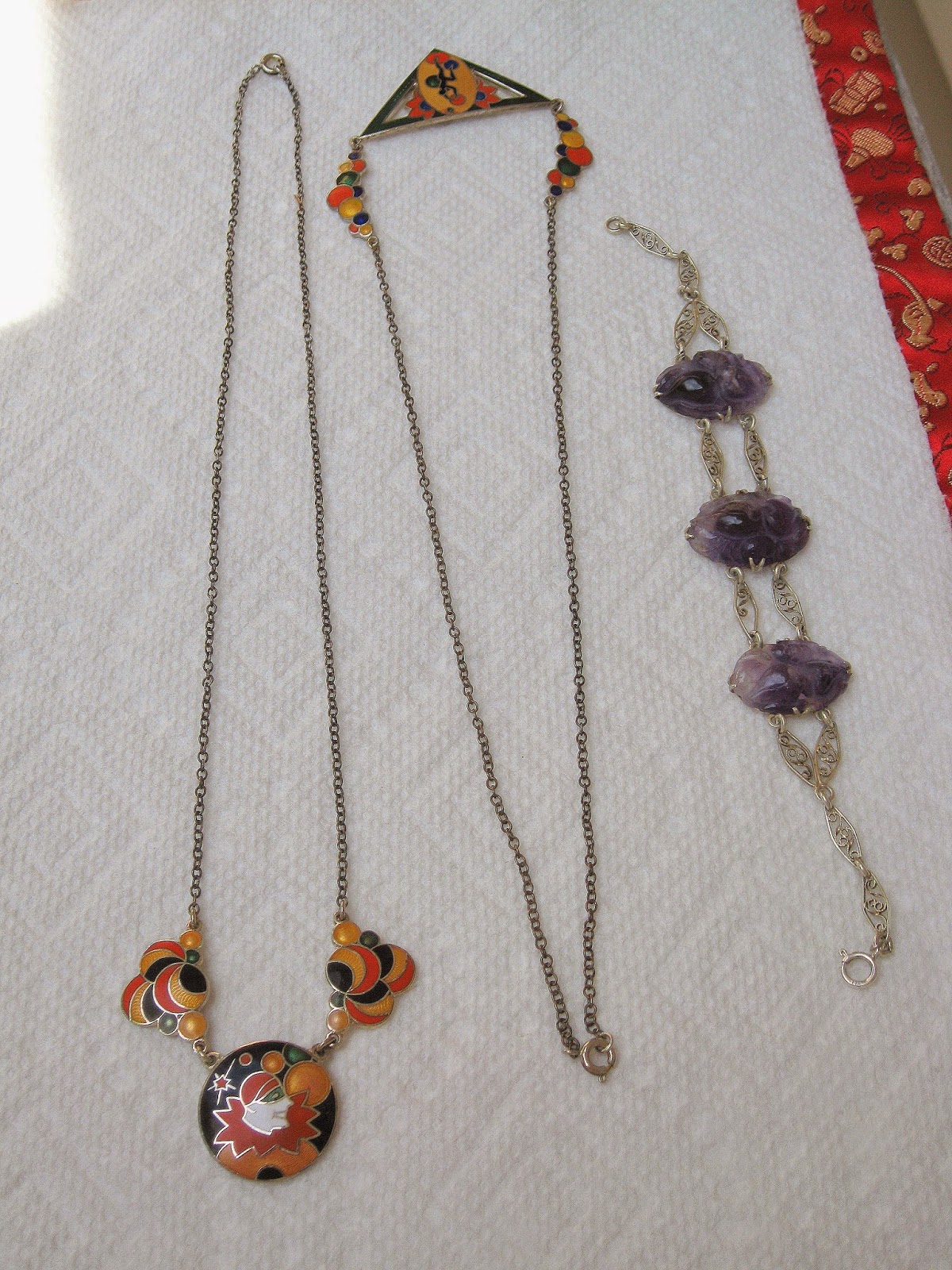It started innocently enough:
Several objects covered with baking soda, ready for the hot water bath.
But within moments, this happened:
Notice that several of these sterling beads have actually turned black, not shiny silver!
It turns out there were several potential culprits:
The two Art Deco "Bubble" Necklaces on the left were strung on nickle chain, not silver plate as I had been told by the vendor, and a nickle safety chain had been attached to the amethyst bracelet on the right. In addition, a fourth necklace had been strung on uncoated metal wire of unknown type and crimped with what appeared to be zinc metal.
Tarnish is caused when hydrogen sulfide reacts with surface silver to form silver sulfide. This process can be reversed in a classic redox electrochemical reaction by placing silver (the cathode) in a salt water bath (the baking soda dissolved in water) with a metal that has more affinity for sulfur than silver has (here, aluminum --the anode). The two metals need to be in contact with one another. The process messed up here because I inadvertently placed a tarnished metal into the bath that actually had less affinity for sulfur than did the silver. The problem was remedied easily enough--I just needed to repeat my saltwater bath making sure that nothing other than silver and aluminum were in the chemical mix. I have also started to use this:
A neodymium magnet can be used to detect any unexpected magnetic metals in your jewelry (primarily nickel). I also now create separate aluminum "boats" for each piece of jewelry so that if the redox reaction does go wrong, it will at least be limited to a single piece.






